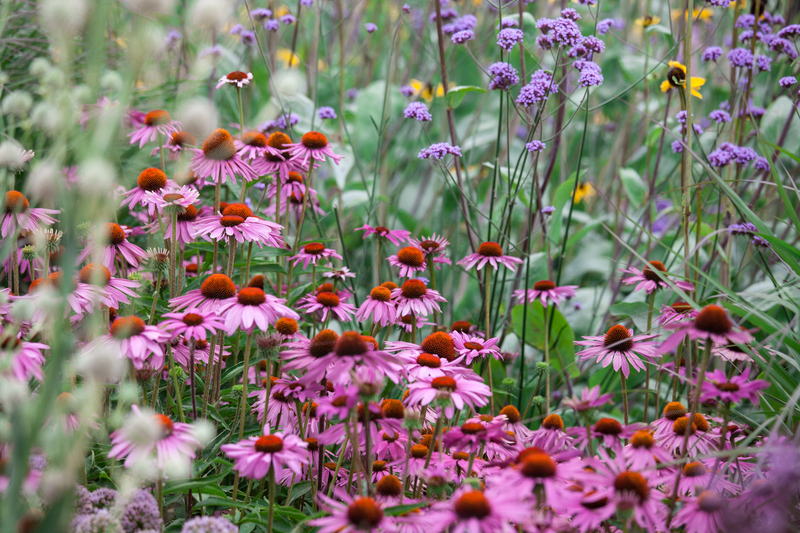Managing Nutsedge Growth in Lawns
Posted on 10/04/2025
Nutsedge, often mistaken for grass, is a persistent and challenging weed to manage in lawns. Characterized by its glossy, V-shaped leaves and rapid growth, nutsedge can quickly dominate your lawn if not controlled effectively. This article will delve into various strategies for managing nutsedge growth in lawns, providing you with the tips and insights needed to maintain a healthy, nutsedge-free lawn.
Understanding Nutsedge
Nutsedge, also known as nutgrass, is not a grass but a sedge. The most common types are yellow nutsedge and purple nutsedge. Both types can invade lawns and garden beds, thriving in moist, poorly-drained soils. They produce tiny tubers called nutlets, which make them extremely resilient and hard to eradicate.

Identification of Nutsedge
Identifying nutsedge is the first crucial step in managing it. Look for the following characteristics:
- V-shaped, glossy leaves that grow in sets of three.
- Triangular stems when viewed in cross-section.
- Yellowish or purplish spikelets that appear above the leaves during summer.
- Fast growth rate, particularly during warm months.
Prevention is Key
Preventing nutsedge from establishing in your lawn is easier than dealing with an infestation. Ensure your lawn is not overwatered, as nutsedge thrives in moist conditions. Proper soil drainage, adequate fertilization, and regular lawn maintenance will make your turf less hospitable to nutsedge.
Cultural Control Methods
Cultural control methods focus on creating an environment unfavorable to nutsedge. Here are some effective practices:
1. Mowing: Regular mowing at the recommended height for your grass type keeps the lawn dense and healthy, reducing space for nutsedge to establish.
2. Water Management: Avoid over-irrigation and improve soil drainage. This limits the moist conditions nutsedge needs to thrive.
3. Aeration: Regularly aerating your lawn helps to improve soil structure and drainage, making it difficult for nutsedge to get established.
4. Healthy Lawn Practices: Maintain a vigorous lawn by following proper fertilization, overseeding, and soil pH adjustments.
Chemical Control Methods
When cultural methods are insufficient, chemical control methods can help manage nutsedge effectively. Here's a breakdown:
1. Pre-emergent Herbicides: These are applied to prevent nutsedge seeds from germinating. They can be part of a preventive strategy.
2. Post-emergent Herbicides: These herbicides target established nutsedge plants. Selective herbicides are preferable as they minimize damage to your lawn. Products containing halosulfuron or sulfentrazone are effective.
Manual Removal
Manual removal can be labor-intensive but effective for small infestations. Ensure you remove the entire plant, including the tuberous nutlets, to prevent regrowth. Regular monitoring and removal of new shoots are necessary for this method to succeed.
Pros and Cons of Nutsedge Management Methods
Understanding the advantages and disadvantages of various methods will help you choose the right approach for your lawn.
Pros:
- Cultural Methods: Environmentally friendly and improve overall lawn health.
- Chemical Methods: Highly effective when used correctly, often providing quicker results.
- Manual Removal: Immediate and eco-friendly, suitable for small areas.
Cons:
- Cultural Methods: May take time to see visible results and require consistent effort.
- Chemical Methods: Potential for lawn damage if not used properly, and may need repeated applications.
- Manual Removal: Time-consuming and labor-intensive, particularly for larger infestations.
Tips for Effective Nutsedge Management
1. Early Detection: Identify and treat nutsedge as early as possible to prevent widespread infestation.
2. Integrated Approach: Combine cultural, chemical, and manual methods for the best results.
3. Consistent Monitoring: Regularly inspect your lawn for new nutsedge growth and take prompt action.
4. Proper Application: Follow herbicide application instructions carefully to avoid damage to your lawn and ensure effectiveness.

Key Takeaways
- Nutsedge is a challenging weed that requires early detection and consistent management.
- A combination of cultural, chemical, and manual methods offers the best chance of control.
- Prevention through proper lawn maintenance is more effective than dealing with an established infestation.
- Always follow product guidelines when using herbicides to avoid damage to your lawn.
Conclusion
Managing nutsedge growth in lawns requires a multi-faceted approach that includes preventive measures, cultural practices, chemical treatments, and manual removal. By staying vigilant and adopting an integrated management strategy, you can effectively control nutsedge and maintain a healthy, beautiful lawn. Regular monitoring and prompt action are essential to keep this persistent weed at bay.



